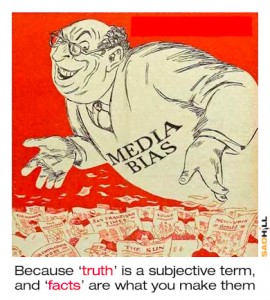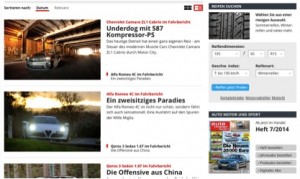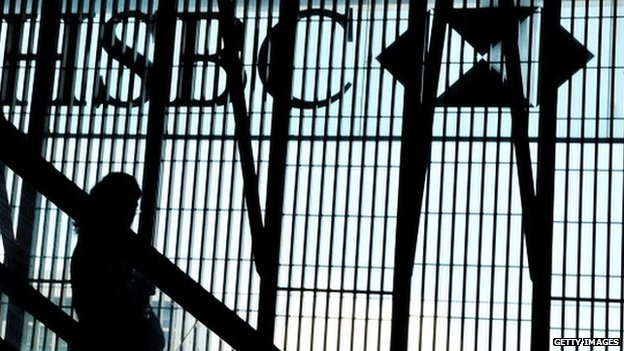On February 17, 2015, Peter Osborne, the Daily Telegraph’s chief political commentator, has resigned from the paper. He explains his decision on open democracy.net and describes the straw that broke the camel’s back:
Late last year I set to work on a story about the international banking giant HSBC. Well-known British Muslims had received letters out of the blue from HSBC informing them that their accounts had been closed. No reason was given, and it was made plain that there was no possibility of appeal. “It’s like having your water cut off,” one victim told me.
When I submitted it for publication on the Telegraph website, I was at first told there would be no problem. When it was not published I made enquiries. I was fobbed off with excuses, then told there was a legal problem. When I asked the legal department, the lawyers were unaware of any difficulty. When I pushed the point, an executive took me aside and said that “there is a bit of an issue” with HSBC. Eventually I gave up in despair and offered the article to openDemocracy. It can be read here.
The question is whether Mr Osborne was told to drop the story because the newspaper was wary of not endangering a ‘bankable’ advertising contract (for elements of answer, see the rigorous analysis performed by Gordon Ramsay on the blog Policy Wonkers).
More generally, the question is: can advertising influence media coverage so as to create a ‘media bias’? I wrote a post last year where I used the theory of two-sided platforms (see, e.g., here and here) to shed some light on this issue. I reproduce parts of this post here.
The basic intuition is pretty clear: newspapers, magazines, radio stations, TV channels can be seen as two-sided platforms that link two groups of agents: on one side, we have the audience (readers, listeners or viewers) and on the other side, we have advertisers. As is common on many two-sided platforms, the price structure is heavily asymmetric, with one side contributing to the largest part, if not all, of the revenues. For media platforms, advertisers are commonly the ‘paying side’, while the audience is the ‘subsidy side’.
- What do advertisers pay for? They pay for having access to the attention of the audience. Naturally, their willingness to pay grows with the audience that they have access to. In the jargon of the economic literature, it is said that the audience exerts a positive indirect network effect on advertisers.
- What does the audience pay for? It pays for content. The question is then how the value of this content is affected by the presence of advertising. The answer to this question determines whether the advertising side exerts a positive or a negative indirect network effect on the audience. The effect is positive if, for instance, advertising contains useful information (think, e.g., of classified ads); conversely, the effect is negative if advertising is seen as a nuisance (e.g., because it spoils the reading or viewing experience). Note that the perception of such effects is likely to differ across individuals.
The sign and the magnitude of these indirect network effects are crucial to predict the importance of profit-oriented biases on media platforms. One can indeed conjecture that media biases are more likely to occur when the audience mainly sees advertising positively rather than negatively. In fact, when the audience welcomes advertising, there are positive indirect network effects on both sides. A positive feedback loop is thus in place: the larger the audience, the easier it is to attract advertisers and the more advertising the media contains, the more the media becomes attractive for the audience. In such a context, the owner of the media platform has higher incentives to favour content that pleases advertisers (or to avoid content that may displease advertisers) as this further fuels the positive feedback loop. The reverse applies when the audience mainly dislikes advertising: here, biasing the content towards the advertisers’ taste is less profitable as any increase in the amount of advertising would drive part of the audience away, thereby reducing the willingness to pay of the advertisers.
Two specific cases seem to confirm this intuition. The first case (which I already described on this blog) shows how costly it can be for a magazine to publish a piece of news that upsets one major advertiser. The second case (coming from an article published in 2014 in the Review of Economics) examines empirically how advertising by automobile manufacturers affects automobile reviews in a leading German car magazine. We then examine whether a solution to such problems could not come from the very company that dominates online advertising.
A tales of Sheiks and cheques

The Bulletin is a magazine for expatriates moving to or living in Belgium. In its issue of July 10, 2008, the magazine picked up a story that had already been reported in the Belgian and international press. The article described a police raid at the fourth floor of the Conrad Brussels hotel, which had been rented by some members of the Nahyan royal family of the United Arab Emirates. These people were accused of exploiting and mistreating their servants.
The hotel management regarded the publication of these reports as “unethical” and decided to cancel its subscription to the magazine. Two other hotels from the same group soon followed suit.
At first glance, this looked like a minor event for the magazine. The three hotels together distributed about 700 copies of the magazine, which amounted to 5 percent of its circulation. Yet, the magazine’s editor in chief, Derek Blyth, declared to the New York Times: “Our financial stability is at stake with such a major response. We’re reeling from the impact.”
Hence, there seems to be a disproportion between the scale of readership loss and the economic consequences for the magazine. Yet, the apparent paradox quickly clears when one realizes that the rich patrons of these five-star hotels constitute the audience that advertisers value the most.
Biased car reviews

Dewenter and Heimeshoff (2014) examine the potential bias in car reviews of a leading German car magazine, Auto, Motor und Sport. More precisely, they investigate whether there is a link between car manufacturers’ advertising volumes in the magazine and the reported performance of the respective cars. Ample information is available to measure the characteristics of cars in a quite objective way (horse power, trunk capacity, mileage, emissions, etc.). Such objective measures can then be used to evaluate to which extent the test scores published in the magazine are based on such objective technical characteristics or on more subjective views “suggested” by advertising car manufacturers.
It is important to note that while an influence of advertising on test scores may exist (which is precisely what the authors try to uncover), the reverse influence may also exist: test scores may influence (future) advertising volumes (for instance, manufacturers may reduce their advertising expenditures after bad test scores have been reported). Neglecting this possibility may lead the authors to overestimate the impact of advertising volumes. To address this possibility of reverse causality, the authors use a number of appropriate econometric methods, which allow them to state with the following with some confidence:
Our main finding is a statistically significant influence of advertising on test scores, which provides evidence that a media bias caused by manufacturers’ advertising expenditures exists in car reviews.
Is Google Contributor the solution?
In November 2014, Google launched Contributor, a service that “is designed to allow web users to pay sites that they visit a monthly fee, and in return see no Google ads when they visit those sites.” How much does it cost? Actually, users can choose to pay $1, $2 or $3 a month to read their favorite website free of ads. So far, “only a handful of partners have been announced by Google“: Mashable, The Onion, Science Daily, Imgur, WikiHow, and Urban Dictionary.
This looks like a very exciting experiment. On the one hand, data on the number of users subscribing and on the average amount that they pay may allow us to estimate the monetary value of the negative indirect network effect that advertising exerts on users. On the other hand, participation of websites is also interesting to monitor: how many of them will join and, more importantly, which type of websites will join? One can expect this scheme to be more attractive for internet media that want to give a credible signal of their independence. Indeed, by decreasing their reliance on advertising, they may convince readers that they are more immune to the sort of ‘advertising media bias’ that we described above.
I would be happy to hear your thoughts about this. Search for other stories of potential media bias; look also for economic analysis of this issue.


